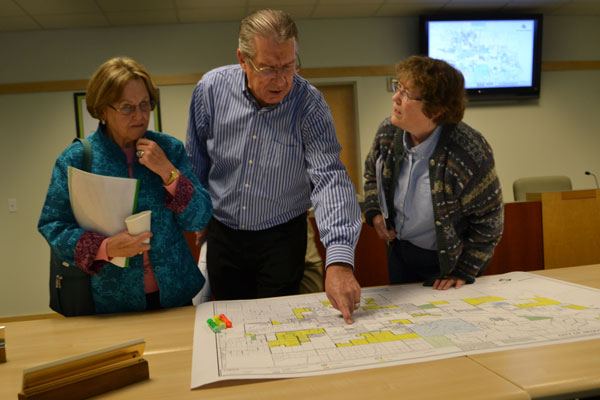After 100 years, the City of Sequim is considering where to grow next.
Most of the growth will take place within the city’s Urban Growth Area (UGA), established by Clallam County and defined by the Legislature as the area “where urban growth must be encouraged and outside of which growth can occur only if it is not urban in nature.”
The vast majority of the city’s UGA is now within city limits, but there are additional areas just beyond the city limits, and islands of land within, that could be annexed.
At a Monday, Nov. 4, get-together of the Sequim City Councilors and Sequim Planning Commissioners provided a first opportunity to discuss the opportunities provided by expansion — and the potential pitfalls.
Chris Hugo, city director of community development, said the city likely doesn’t need to expand its current borders.
Sequim’s projected urban growth, he said, is 2 percent per year over 20 years within city limits and the city’s utilities service areas.
By recent estimates, the city has anywhere from 2,000-3,000 vacant lots.
Hugo estimates that with the city’s vacant space, now at three to five units per acre, allows for upwards of 30,000 to 35,000 people, which he said could be enough for roughly 100 years.
Hugo said the city and its UGA could range from about 60,000 people to 90,000 people by 2035.
Asked if a higher growth rate than 2 percent would put more pressure on the city to annex more land, Hugo said no.
Leave it to the residents
Sequim City Councilors and Sequim Planning Commissioners joined the discussion, but they weren’t biting.
Councilor Erik Erichsen said he’s reluctant to approach those living in unannexed sections in the UGA until they express an interest in becoming a part of the city.
“Our responsibilities are to the people. We have a large amount of people in (the unannexed UGA) who aren’t up to code with streetlights and roads. That’s what we should be thinking about,” he said.
“I would expect us to have guidelines in place for areas to be annexed. Otherwise, we’d never be caught up (paying for projects) for those people who live here now.”
City Manager Steve Burkett said he and his staff have talked about a phasing plan for bringing utilities and services to the areas; it’s something they could revisit if directed.
He also emphasized how important partnering on design standards with Clallam County was, saying, “We don’t want anyone outside of the city developed at urban levels without standards if we have to inherit those.”
Councilor Laura Dubois said any areas within the UGA that might be expensive or cost prohibitive to assume must be taken out or put into a utilities phasing plan.
Hugo told Dubois the 2006 information the current city UGA is based on indicates all of the areas are affordable.
Part of his reasoning for asking for the discussion, he said, was to address issues of annexation affordability and to decide whose guidelines set building standards — the city’s or the county’s.
Hugo said it’s widely anticipated that the unannexed areas within the UGA will all be brought into the city at some point. He said that’s probably not the case because the city can’t expect everyone to make the same decision. He gave the example of a 2009 decision by residents in Palo Verde subdivision to opt out of city services.
Hugo said there are developments in the UGA they likely wouldn’t want in the city anyway, such as subdivided sites of one and two acres with septic tanks. Most of the UGA sites, he said, are rural rather than urban.
Why join?
There are two reasons residents choose to annex into the city, said Paul Haines, city public works director.
Police protection and sewer and water services.
County Commissioner Jim McEntire said some developers may seek annexation to unlock the value in their land following the decision to double rural lot sizes.
Burkett said annexation of Bell Hill, which isn’t in the UGA, has been a topic for a while but it brings up many issues, such as street maintenance.
Burkett said the average lot price there is higher than anywhere else in the Dungeness Valley, but he downplayed the economic impact for the city, saying annexation would only generate about $600 per $500,000 home. He said the move to annex would be more political than economical.
Mayor pro-tem Ted Miller said it would be a positive asset for the city but he would want Bell Hill residents to suggest the idea first.
Ultimately, the councilors and commissioners opted for city staff to create a comprehensive list of pros and cons of each UGA site for another discussion.
“We have a keen interest in making sure we get it right,” McEntire said. “This is a good kick off to a good series of conversations.”
Reach Matt Nash at mnash@sequimgazette.com.



